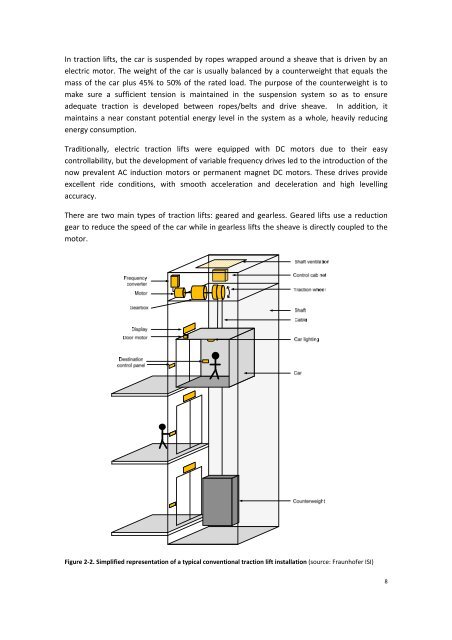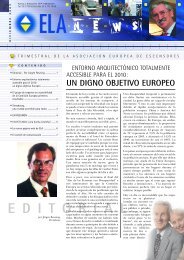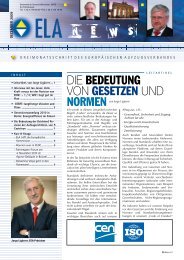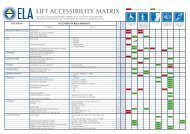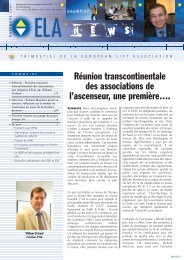WP6-Brochure-E4 brochure - ELA European Lift Association.
WP6-Brochure-E4 brochure - ELA European Lift Association.
WP6-Brochure-E4 brochure - ELA European Lift Association.
Create successful ePaper yourself
Turn your PDF publications into a flip-book with our unique Google optimized e-Paper software.
In traction lifts, the car is suspended by ropes wrapped around a sheave that is driven by an<br />
electric motor. The weight of the car is usually balanced by a counterweight that equals the<br />
mass of the car plus 45% to 50% of the rated load. The purpose of the counterweight is to<br />
make sure a sufficient tension is maintained in the suspension system so as to ensure<br />
adequate traction is developed between ropes/belts and drive sheave. In addition, it<br />
maintains a near constant potential energy level in the system as a whole, heavily reducing<br />
energy consumption.<br />
Traditionally, electric traction lifts were equipped with DC motors due to their easy<br />
controllability, but the development of variable frequency drives led to the introduction of the<br />
now prevalent AC induction motors or permanent magnet DC motors. These drives provide<br />
excellent ride conditions, with smooth acceleration and deceleration and high levelling<br />
accuracy.<br />
There are two main types of traction lifts: geared and gearless. Geared lifts use a reduction<br />
gear to reduce the speed of the car while in gearless lifts the sheave is directly coupled to the<br />
motor.<br />
Figure 2‐2. Simplified representation of a typical conventional traction lift installation (source: Fraunhofer ISI)<br />
8


